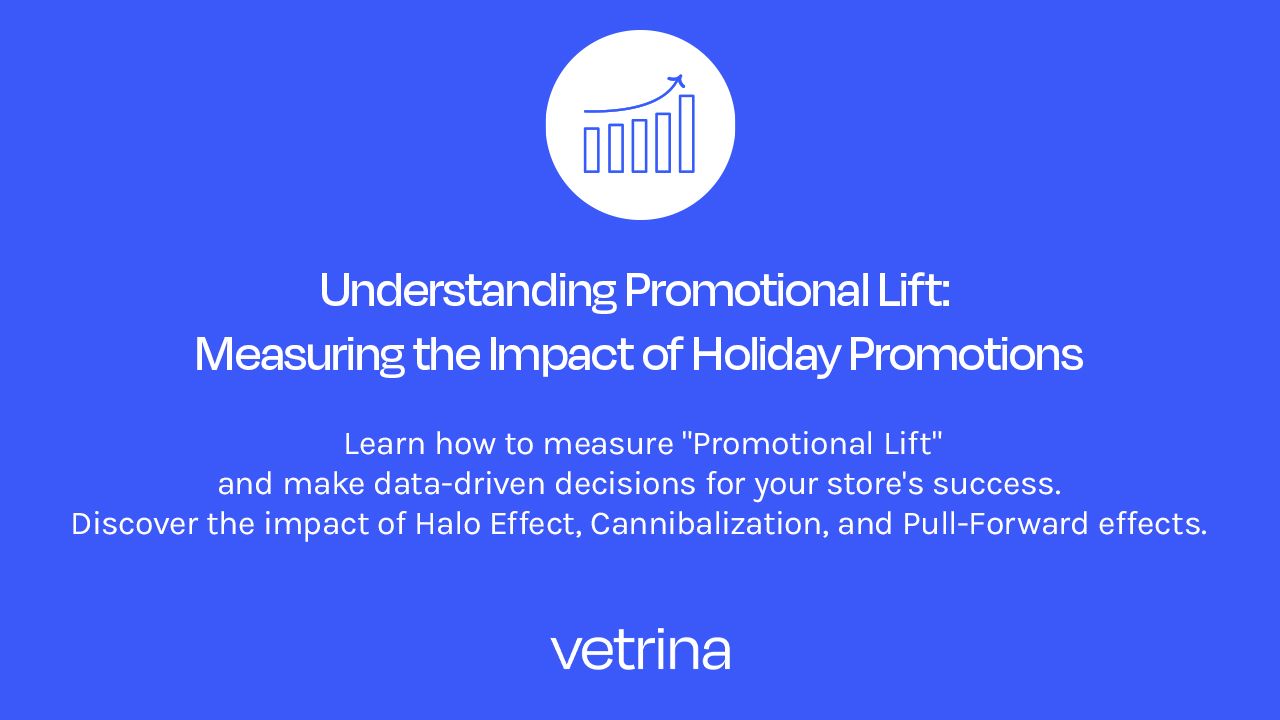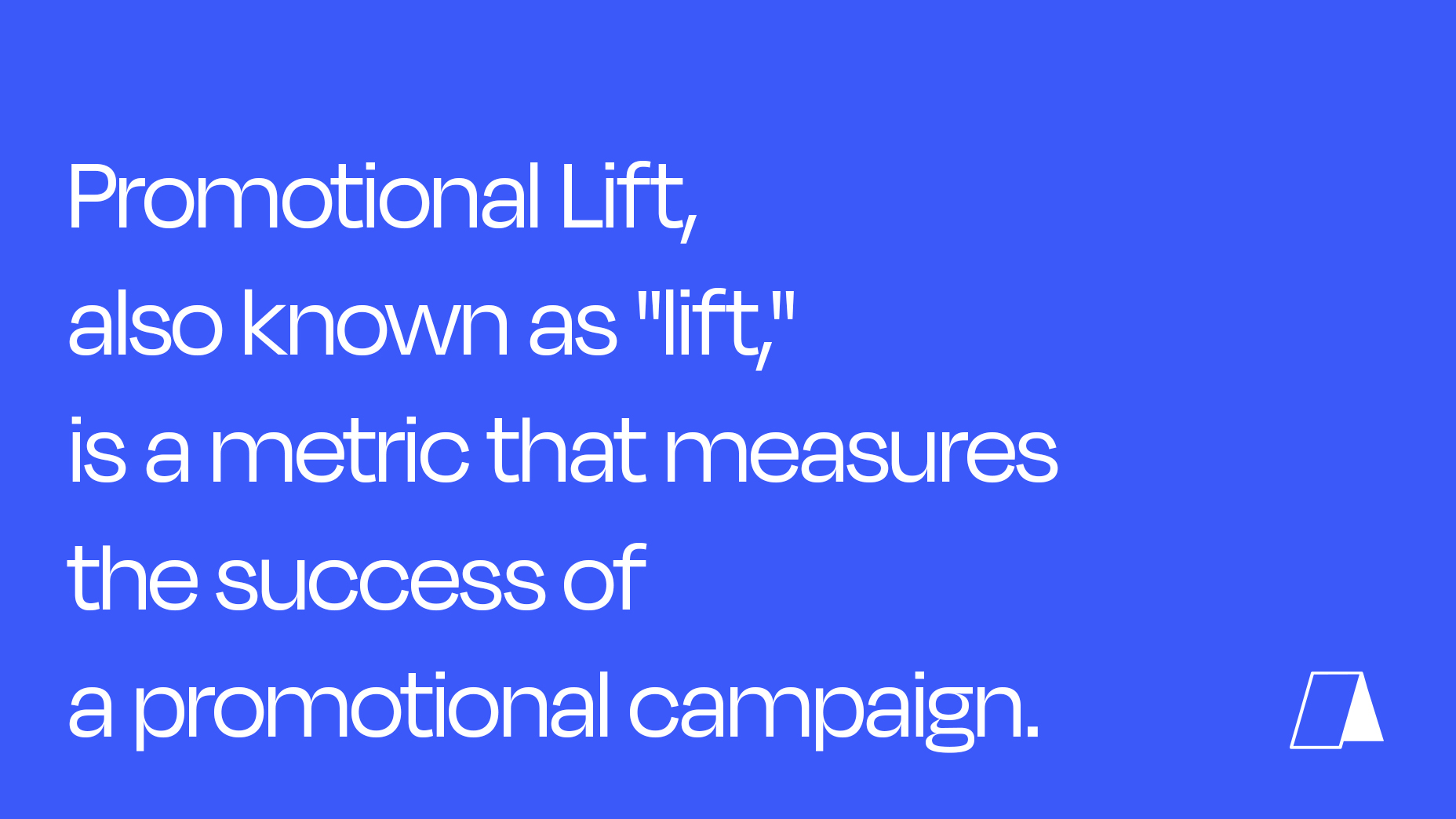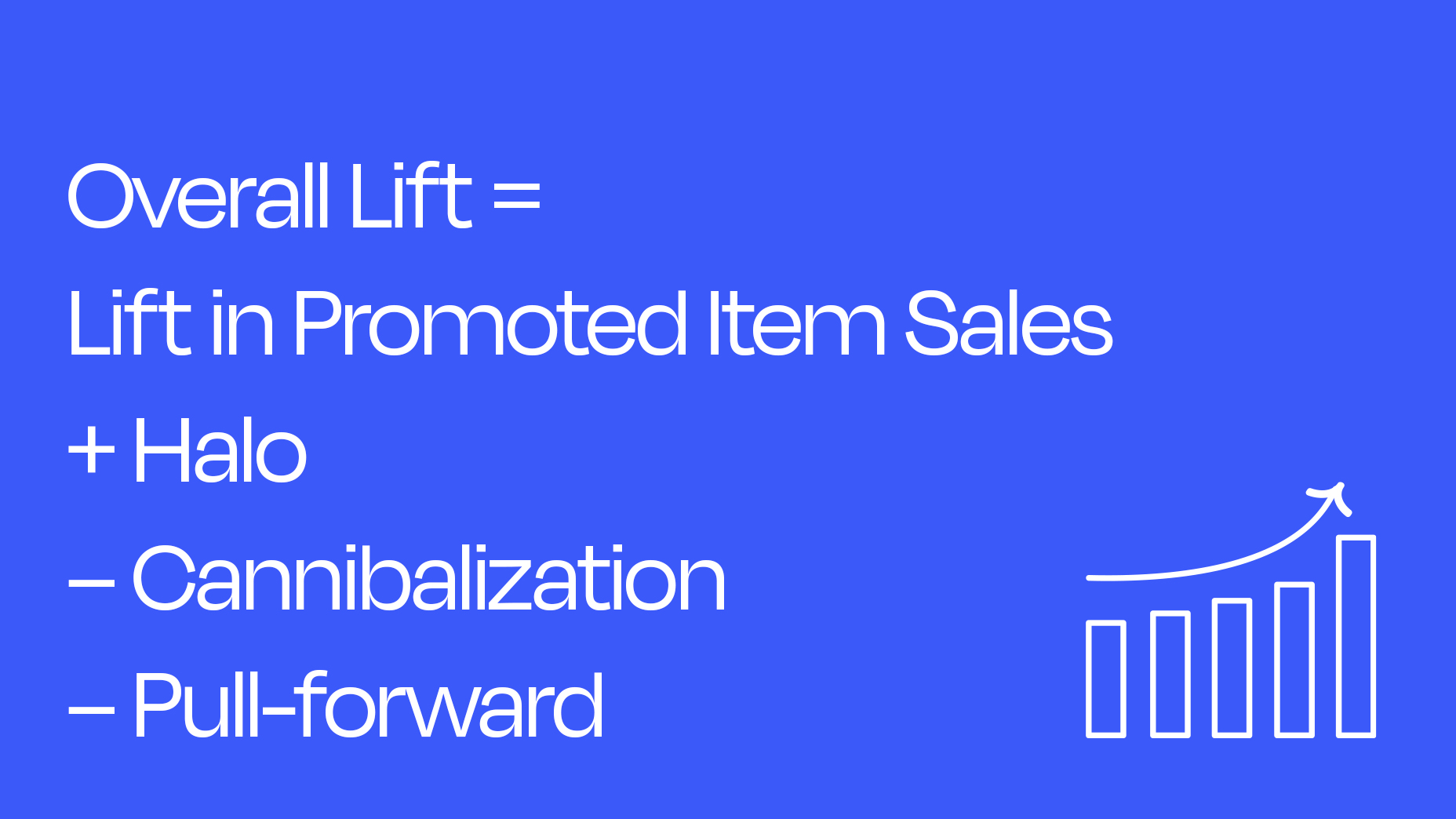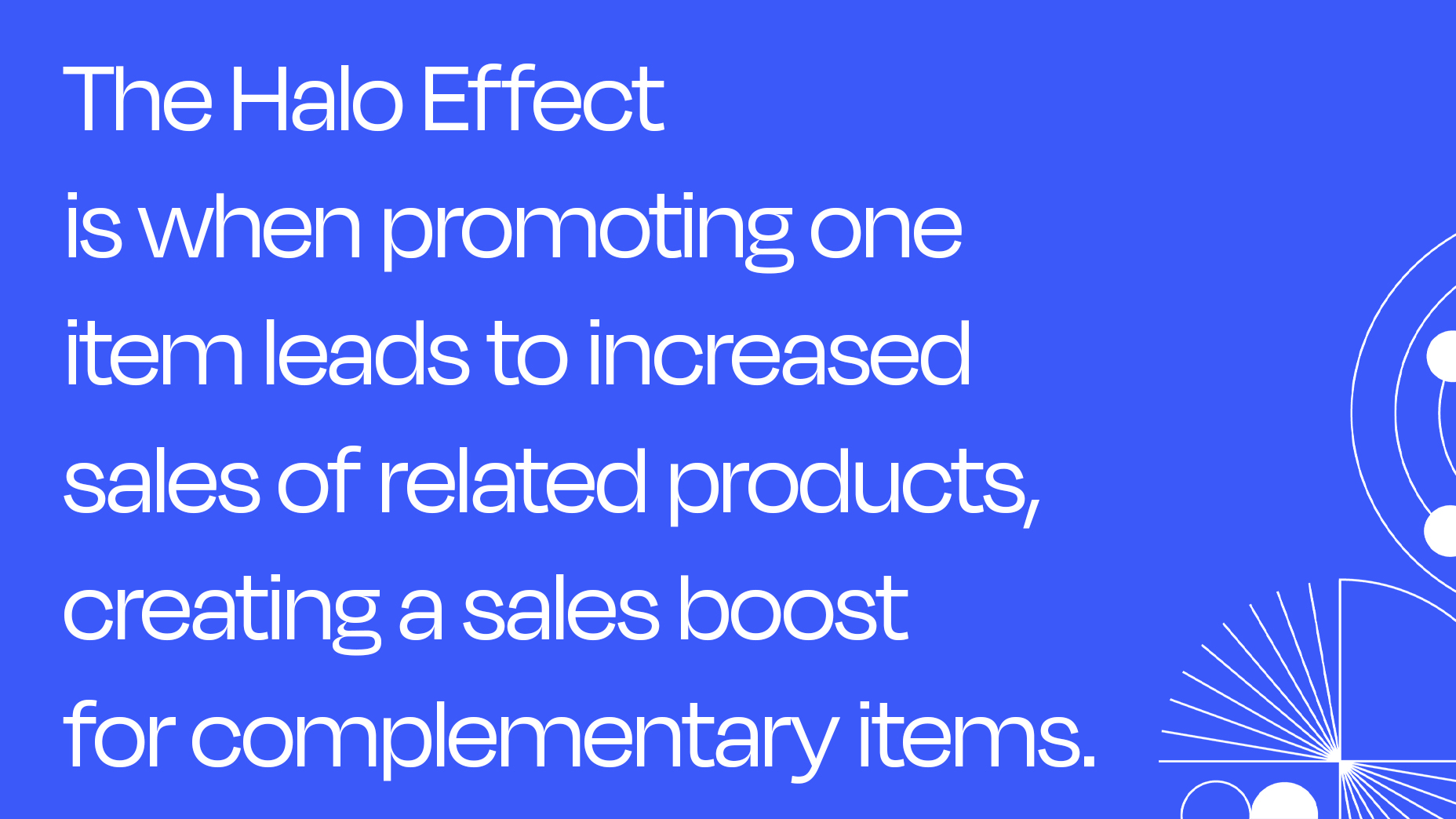
Understanding Promotional Lift: Measuring the Impact of Holiday Promotions
Oct 16, 2023Picture this: the holiday season is just around the corner, and as a cannabis retailer, you're gearing up for the busiest time of the year. You've got your holiday promotions planned, your product assortment decisions made, and you've reached out to your vendor partners. Everything seems set, but before you kick off your festive campaigns, you need a way to measure their total impact. How do you gauge the success of your seasonal promotions? How do you ensure they don't just boost one product but benefit your entire store?
If you have ever wondered, “Did this promotion work?”, or “How can I know this sale is working”, then you are not alone! Enter "Promotional Lift," a fundamental concept for any successful cannabis retailer or brand.

What is Promotional Lift in Cannabis Retail?
Promotional Lift, also known as "lift," is a metric that measures the success of a promotional campaign. It shows how much a particular promotion or offer has helped increase sales compared to what would normally happen without the promotion.
Simply put, Promotional Lift helps us answer the important question: "Did our holiday promotions greatly affect our sales, or did they not have much impact?" It goes beyond just looking at individual promotions and explores the overall impact they can have on product sales in a store.
Why is Promotional Lift Important?
The reality is many cannabis retailers and brands run promotions with the expectation of generating profits, either through increased sales volume or by attracting more shoppers, but do not understand the results of their own marketing efforts. Many promotions fail to deliver the expected ROI, and retailers often rely on experience and intuition rather than data-driven insights to plan promotions.
- Performance Assessment: It allows retailers and brands to evaluate the effectiveness of their holiday promotions. Did the promotions lead to increased sales, or did they underperform?
- Optimization: Armed with lift data, businesses can fine-tune their promotional strategies. This includes adjusting the timing, frequency, and type of promotions to maximize their impact.
- Resource Allocation: It helps in allocating resources efficiently. By identifying which promotions drive the most lift, businesses can allocate their budget and efforts to the most lucrative campaigns.
- Competitive Edge: Knowing the lift generated by holiday promotions can provide a competitive edge. Businesses can benchmark their performance against industry standards and competitors.
- Customer Insights: Promotional Lift can also reveal valuable insights into customer behaviour. For example, it can highlight which products are more likely to be purchased when certain promotions run.
Understanding and measuring Promotional Lift empowers cannabis retailers and brands to make data-driven decisions. It ensures that holiday promotions are not only festive but also financially rewarding.
Now that we've shed light on what Promotional Lift is and why it's essential let's shift to how to calculate the total impact of your holiday promotions effectively.
Understanding the Total Lift Formula:
To get started, let's break down the formula for calculating the total impact of a promotion. Overall lift encompasses more than just the immediate boost in sales for the promoted item; it looks at the broader implications for your entire inventory.
Let’s start with the formula for calculating your promotional lift, then go over the individual parts of it so you can use it yourself. Here is the formula:
Overall Lift = Lift in Promoted Item Sales + Halo – Cannibalization – Pull-forward

What Is Lift in Promoted Item Sales?
Imagine you're a cannabis retailer gearing up for a seasonal promotion. You decide to offer a special deal on a popular strain of cannabis. Sales start pouring in, and you see a significant spike during the promotion period. That's great news, right? But here's the catch: how do you know if this spike is solely due to the promotion or if it's just a part of the natural ebb and flow of your business?
This is precisely where "Lift in Promoted Item Sales" comes into the picture. In essence, it's a way of measuring the actual impact of your promotion. It helps you differentiate between what would have been the normal sales of the item during that time and the sales that occurred because of the promotion.
Cracking the Lift Formula:
Now, let's break down the formula for calculating this crucial metric:
Lift in Promoted Item Sales = Sales During Promotion - Baseline Sales
- Sales During Promotion: This represents the total sales of the promoted item during the promotional period. It's the number of units sold while your special deal was running.
- Baseline Sales: The baseline sales, on the other hand, are what you would typically expect to sell during the same period if there were no special promotions in place. It's like looking at the "business as usual" scenario.
Why Does It Matter?
Consider this scenario: without measuring lift, you might think that the spike in cannabis sales during the promotion was solely due to the promotion's brilliance. However, when you calculate the Lift in Promoted Item Sales, you might find that a portion of those sales would have happened even without the promotion.
Understanding this distinction is crucial because it helps you gauge the true effectiveness of your promotions. It answers the question, "Did our promotion genuinely drive more sales, or were these sales bound to happen anyway?"
What is the Halo Effect in Cannabis Retail?
So, what exactly is this Halo Effect, and why does it matter for your cannabis retail business? Imagine this scenario: you walk into your favourite dispensary, and you notice a prominent promotion for a particular strain of cannabis, let's call it "Blue Dream." The budtender enthusiastically tells you about this excellent deal and the unique properties of Blue Dream.
You decide to give it a try and make the purchase. But here's where the Halo Effect comes into play. As you're about to complete your purchase, you spot a display of premium rolling papers right next to the Blue Dream section. Intrigued by the idea of enhancing your experience, you decide to grab a pack.
This is the Halo Effect in action. It's the phenomenon where promoting one item, in this case, Blue Dream cannabis, influences you to purchase another related item – in this instance, the rolling papers. In essence, the promotion of Blue Dream spills over into boosting the sales of complementary products, like rolling papers.

Measuring the Halo Effect:
Now that we've demystified the concept, let's explore how you can measure this intriguing connection. The Halo Effect is not just a theory; it's a tangible impact on your bottom line. To measure it, you must look beyond the surface and dive into your sales data.
For instance, let's revisit the Blue Dream promotion. During the promotional period, you will notice a significant increase in Blue Dream sales. But here's the critical question: did this boost in sales also lead to a notable uptick in rolling paper sales?
The answer lies in the data. By comparing the sales of Blue Dream during the promotion to the sales of complementary items like rolling papers during the same period, you can gauge the extent of the Halo Effect. If you find a significant correlation between these two products – a notable increase in rolling paper sales coinciding with the promotion of Blue Dream – you've successfully measured the Halo Effect.
What is Cannibalization in Cannabis Retail?
On the flip side, cannabis retailers have to watch out for cannibalization. This happens when a promoted item increases its own sales but decreases the sales of another non-promoted item in the same category. Think of competing commodity brands like Pepsi and Coke. If Pepsi goes on sale, it might cannibalize Coke sales. The real question is, how do you measure this phenomenon?
How to Measure Cannibalization through Category Analysis:
Retailers usually prioritize the overall performance of product categories rather than individual items, especially in markets that are driven by commodity goods. The reality is that consumers tend to opt for the cheaper or promoted product, impacting overall category sales. To measure cannibalization, examine the historical promotional performance of similar competing items grouped within a category. By understanding the category's performance when one item was marked down, you can assess the overall impact.
Example of Cannibalization: Pepsi vs Coke
Imagine you're in the competitive world of beverage retail, and you're facing the age-old rivalry between Pepsi and Coke. Here's a secret that seasoned retailers know: it's not just about the individual cans; it's about the entire soda aisle.
Retailers often grapple with a common dilemma—how to measure the impact of promotions in categories dominated by commodity goods. In this world, consumers are savvy, and they're often swayed by lower prices or enticing promotions. This can significantly affect the sales of the entire category.
Picture this: you decide to run a promotion on Pepsi, offering it at a discounted price. Unsurprisingly, Pepsi sales skyrocketed during the promotion. But here's the twist—Coke sales dip. It's not because there's anything wrong with Coke; it's because consumers are flocking to the cheaper or promoted option (in this case, Pepsi).
This phenomenon is what retailers refer to as "cannibalization." It's when one promoted item, like Pepsi, boosts its sales but eats into the sales of a similar item in the same category, like Coke.
To measure cannibalization, you don't just scrutinize the battle between Pepsi and Coke; you examine the entire battlefield. Dive into the historical promotional performance of all similar competing items grouped within the soda category. Analyze how each performed when one of them was marked down.
Going back to our Pepsi versus Coke showdown, when Pepsi got a discount, you observed not only the surge in Pepsi sales but also the drop in Coke sales. This is a classic example of category analysis in action. You're not just looking at one soldier; you're studying the entire army.
Understanding category performance during promotions is like holding a magnifying glass to the battlefield. It equips you with insights into how one promotion impacts the broader category. In this case, you realize that while Pepsi's sales rose, the overall soda category might have taken a hit because consumers switched to the cheaper option. This awareness allows you to strategize more effectively.
The Impact of Pull-Forward Effects on Retail Sales
"Pull-forward" means that when you run a promotion to increase sales for a short time, it can make people buy more of that product than they normally would. In retail, it means that after a promotion, sales of that product might drop because people already bought a lot of it during the promotion. It's as if the promotion "pulled" sales from the future into the present. So, retailers need to be aware of this when planning promotions to avoid having too many products left after the promotion ends.
Imagine you're running a limited-time promotion on a popular cannabis product, say, a special strain or a unique accessory. During the promotion, customers flock to your store, enticed by the fantastic deals and offerings. Sales surge and everything seems to be going as planned.
However, once the promotion ends, you notice that the subsequent sales of the promoted item are not as robust as they were during the promotion. This drop in sales can be attributed to the "Pull-forward" effect. In essence, the promotion pulled forward sales that would have naturally occurred in the future had the promotion not taken place.
A Simple Solution: Unlocking Insights with Basket Analysis:
Now, let's talk about a simple yet powerful tool for understanding the bigger picture of your promotions: basket analysis. This method doesn't require rocket science; it's all about examining your past sales data during various promotional periods. What you're essentially doing is peeking into the shopping baskets of your customers when they bought the featured item and finding out what other items they typically picked up.
Here's an example: during the Pepsi promotion, you might notice that a whopping 60% of the baskets containing Pepsi also had Doritos, even though Doritos weren't on sale at that time. This shows a clear connection between these two products, something we call the Halo effect, as we discussed earlier.
This kind of information is very helpful for cannabis retailers. It gives you valuable insights to make smart decisions, like not offering discounts on related items at the same time, which could hurt your profits. It also helps you understand if there's any friendly competition going on between products. For instance, when you promote Pepsi, you might notice that Coca-Cola sales dip slightly. This is why retailers often look at category performance as a whole rather than focusing on individual products. It's a simple but effective way to get the full picture.
Tips for Effective Retail Promotion Planning for Retailers and Brands:
Retailers:
- Track baskets throughout multiple promotional periods: This helps better identify similar products affected by the Halo Effect and product cannibalization.
- Plan for some cannibalization: Especially with products of key partners, arrange tactical promotions with those products at different times to increase their velocity.
- Segment Your Data: Instead of looking at promotions as one monolithic entity, segment your data based on factors like product categories, customer demographics, and purchase history. This can provide deeper insights into which types of promotions work best for specific customer groups.
- Test and Learn: Don't be afraid to experiment with different promotional strategies. Try A/B testing to compare the effectiveness of various offers and timing. Learning from your successes and failures can lead to more refined and successful holiday campaigns.
- Inventory Management: Keep a close eye on your inventory levels during promotions, especially if you're offering discounts or special deals. Running out of a promoted product can lead to missed opportunities, while overstocking can impact your margins.
- Customer Engagement: Leverage customer engagement tools like loyalty programs and personalized offers. Understanding your customers' preferences and purchase history can help tailor promotions that resonate with them, boosting loyalty and sales.
- Monitor Competitor Activity: Keep an eye on what your competitors do during the holiday season. Understanding their promotional strategies can help you stay competitive and potentially discover new ideas for your own campaigns.
Brands:
- Collaborate with Retailers: Work closely with your retail partners to align your promotional strategies. Understand their goals and challenges, and find ways to benefit from holiday campaigns mutually. Not spreading yourself too thin and coordinating efforts with key partners can lead to a more significant impact overall.
- Data Sharing: Share valuable data with your retail partners. Provide insights into consumer behaviour, trends, and the effectiveness of your promotions. Collaborative data sharing can strengthen your relationship and lead to better-informed decisions.
- Product Differentiation: Ensure that your products stand out during the holiday season. Consider offering a season trade marketing kit, creating limited-edition products or SWAG items, or suggesting bundle deals that make your products more appealing to customers.
- Promotion Timing: Coordinate the timing of your promotions with retailers to avoid conflicts or cannibalization of sales. Plan your promotions strategically with new and more mature products to complement the overall holiday shopping experience.
- Adapt and Innovate: Stay agile and be willing to adapt your holiday strategies based on real-time data and market dynamics. Innovate your product offerings or promotional tactics to stay fresh and appealing to customers.
Understanding and measuring Promotional Lift is the key to unlocking the full potential of your holiday promotions in the cannabis retail industry. It's not just about boosting sales for a specific product; it's about strategically maximizing the impact of your campaigns on your entire store. Armed with insights from Promotional Lift analysis, cannabis retailers and brands can fine-tune their strategies, allocate resources wisely, and create more meaningful customer experiences. As the holiday season approaches, remember that success lies in the data, and by making data-driven decisions, you can ensure that your festive campaigns are both joyful and financially rewarding.
If this blog has you digging into your store data, make sure to subscribe to our newsletter as we continue to share expert insights you can action.
Tactical insights to become
a Cannabis Retail Insider!
Access expert insights in one easy-to-digest
and follow-along newsletter.
We hate SPAM. We will never sell your information, for any reason.

